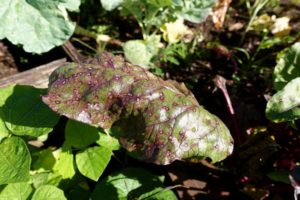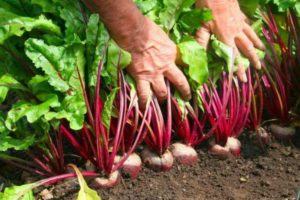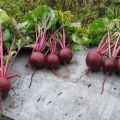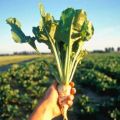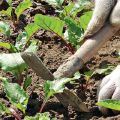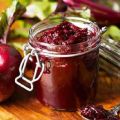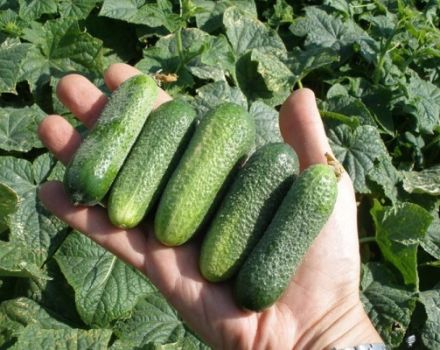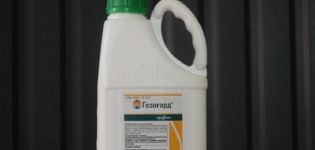Description of the beet variety Wodan f1, features of cultivation and care
Beetroot is used not just as a food product, but as a medicine. It competes even with expensive foreign vitamin complexes. The root crop is grown throughout the territory of the former USSR. Every year summer residents and professional farmers are attracted by new varieties and hybrids. One of the most noteworthy today is the Wodan f1 beet.
Description of the variety
The characteristic of the variety allows us to classify it as an early type. From the moment of emergence to harvest, it takes up to 90 days. The leaves are rich in color, the rosette is well developed. The beets have a rounded shape, the flesh is colored maroon. The skin is thin and smooth. All root vegetables grow to the same size.
The pulp is juicy, there are no rings, the density is high. The taste is excellent. It has a delicate beet flavor. The content of nutrients and trace elements is very high.
Growing
The variety description says that before sowing beet seed Wodan varieties should not be soaked. They have been pre-treated with a fungicide to prevent the development of fungal diseases. Nematodes and other similar pests will not disturb this beet.
Wodan from one seed is capable of producing several sprouts. If you want to get the heads of a larger size, then the weaker shoot is removed. This will not affect the yield in any way. Seeds are sown in open ground when the outside temperature stabilizes at + 12-15 ° C. In the selected area, grooves are made up to 3 cm deep. Between the rows, the distance is made about half a meter. Plants should have enough sunlight, otherwise they will noticeably slow down growth.

Care features
One of the features of caring for Wodan beets is that the beds must be watered at least once a week.... After that, the soil is loosened and the emerging weeds are removed. Due to untimely weeding, a deficiency of moisture and nutrients can occur. And at the wrong time, weeds harvested are quite capable of attracting a lot of pests to the site.
Mulching of beet beds brings a positive result. For these purposes, last year's hay or mowed grass is used. Dried vegetation not only prevents excessive evaporation of moisture, but also prevents weeds from breaking through. And with the rotting of the lower layer, additional nutrients enter the soil.
Advantages and disadvantages
Beet variety Wodan has significantly more advantages than disadvantages. These include:
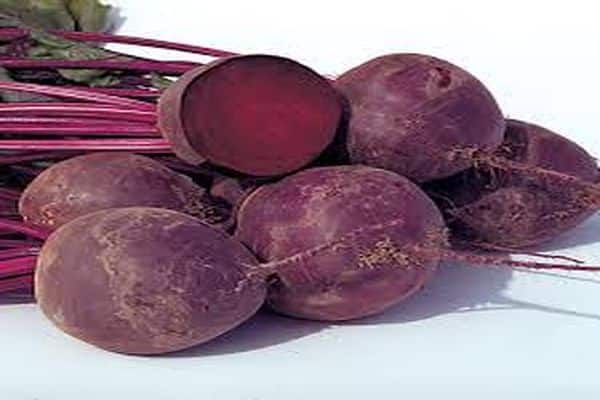
- undemanding in cultivation and care;
- lack of shooting;
- suitability for long-term storage without loss of taste and marketability;
- high taste;
- large roots.
Of the shortcomings, it is worth highlighting that the beet variety Vodan from one seed is capable of producing several shoots. Subsequently, planting requires thinning and removal of a weak shoot. Otherwise, the roots will grow small.
Pests and diseases
Beet variety Wodan f1 shows increased resistance to the most common diseases. However, young shoots are affected by the root-eater. It is most often found on heavy soils and lowlands. The stalk of the affected plant becomes thinner, decays and dies.

For prevention purposes, the soil should be regularly loosened, to prevent the formation of a crust. In autumn, the acidic soil is lime. The rules of crop rotation must be followed.
Harvesting and storage
The harvest of beets of the Wodan variety is produced as the root crops grow. But the technical ripeness occurs 90 days after the emergence of shoots. A month before the expected cleaning of the beds, watering of the plants is completely stopped. The heads are taken out of the soil with a pitchfork or simply pulled out by the tops. A dry, fine day is chosen for cleaning.
After digging, the Wodan beets are left in the sun for a short time to dry. Further, the heads are cleaned of soil residues, the tops are cut off and sent to storage in a cool, dark room. A basement with moderate humidity would be ideal.
Gardeners reviews
Reviews of practicing gardeners about Wodan beets are mostly positive. It is noted that with low labor and material costs, it was possible to get good harvests. Minor shortcomings were later compensated by the harvested root crops of excellent quality. Here are some real reviews of our summer residents.

Maria Afanasyevna, pensioner: “I have been doing the vegetable garden for a long time. Every year I grow my beets at my dacha, we don't buy them for the winter. A couple of years ago I bought seeds of the Wodan f1 variety and was very pleased. The plants proved to be resistant to diseases, no additional treatments had to be done. The fruits are medium in size, but tasty, without rings and veins, beautiful beet color. I will definitely grow this variety again. "
Igor Viktorovich, a novice summer resident: “Recently, my family and I bought a summer cottage and decided to grow organic vegetables and fruits there. In the store, the seller advised us to try the Wodan f1 beet variety. We trusted her opinion and agreed. I confess I didn't have to regret it. The harvest was good, with high taste and marketability. Only a neighbor later said that it was necessary to remove additional weak shoots that formed some seeds. Because of this, the heads have grown small. But for the first experiment the result is excellent, we will definitely grow this variety next season. "
Irina Gennadievna, a resident of the village: “In the village everyone tries to provide themselves with vegetables from their own garden. We grew beets constantly. Several years ago, a seller recommended that we try a new variety, Wodan f1. I am suspicious of hybrids, but I dared to experiment. Now I confess that it is not in vain. She collected an excellent harvest of delicious root crops, the family was satisfied. I am not planning to change this variety yet, I will definitely allocate a place of honor for it on my site. "
